Sited on New Zealand’s South Island, Matagouri House nestles into the undulant lowlands between Lake Wakatipu to the west and the snow-capped (and aptly named) Remarkables mountain range to the east. Auckland-based architects Fearon Hay, which also has a studio in Los Angeles, wanted the house’s massing and position to engage the extraordinary 360-degree views while deferring to the landscape’s virgin character and sense of remoteness. Firm directors Tim Hay and Jeff Fearon were intent on preserving not only the rolling topography of this 2.6-acre site, but also its existing matagouri plants—thorny native shrubs or small trees that can live more than 100 years. Though this vegetation is not legally protected, says Hay, “people here tend to show respect and sensitivity toward the slow-growing and long-lived matagouri.” The resulting 4,470-square-foot house’s simple rectangular forms are set into two hills. Spanning them, a horizontal timber-structured roof effectively raises the ground plane one story: mounded with earth and planted with the same dry native grasses as its surroundings, it echoes the terrain’s natural contours. So begins the gentle dialogue between building and landscape that informs the entire project.
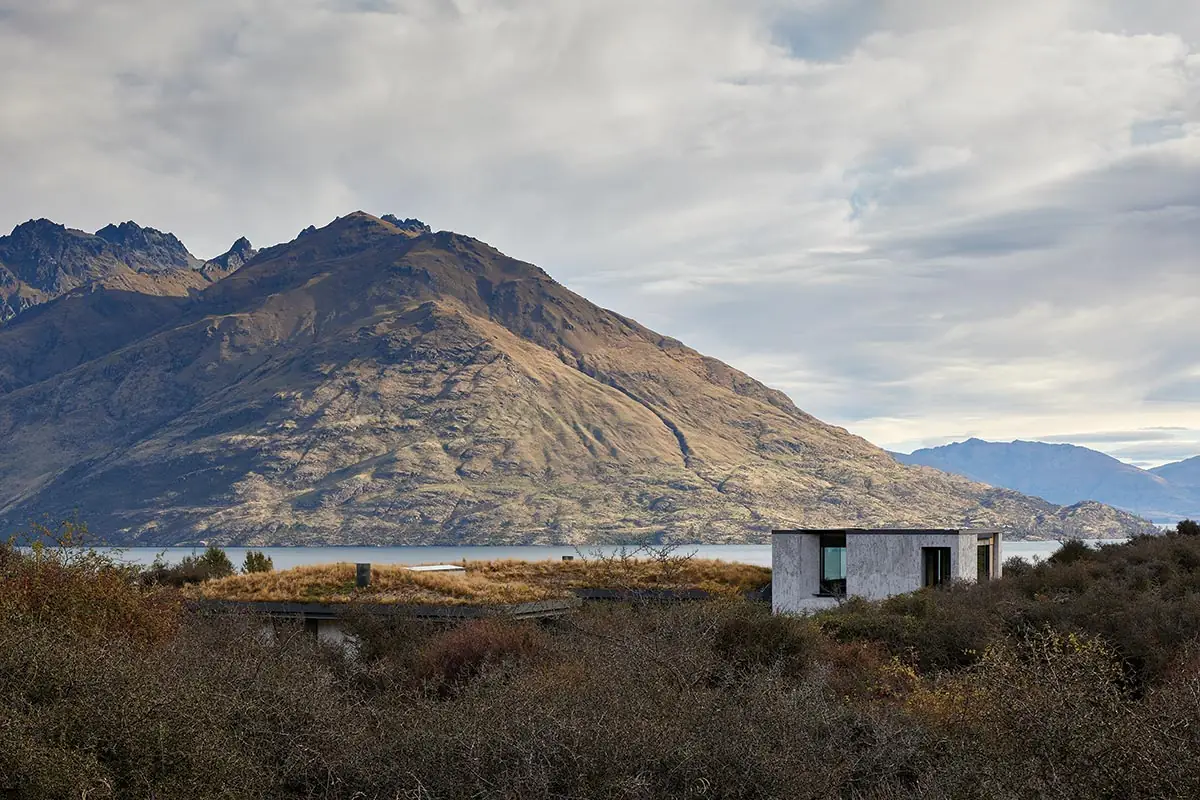
The house is nestled into the mountainous landscape in the southwest of New Zealand’s South Island. Photo © Simon Wilson, click to enlarge.
In imagining a second home for themselves, the clients, a creative couple with grown children, were inspired by Scottish castles and farmhouses. Though New Zealand has no history of castles, the poetic qualities of partial ruins—masonry structures merging with the land—resonated in a country where tumbling, low stone walls in fields often become mossy or weed-covered over time.
The house’s two main forms, each partially embedded in sloping earth, are linked by a corridor with support spaces. The northern volume—which houses the kitchen/dining/living area at ground level—rises on one end to form a modest two-story tower (perhaps a nod to a castle’s keep). Filling its upper level is the primary bedroom suite, an aerie with views all around. The house’s southern volume contains guest rooms and a study. The living spaces surround an open-ended courtyard, sheltered beneath an extension of the landscaped roof. Evoking stony mass and the natural degradation of ruins, the architects clad the house in pale-gray stucco (over masonry block), a surface hand-scratched with trowels while still wet. The resulting rustic texture is rough and, simultaneously, soft, diffusing shadows that would otherwise appear sharp-edged in the crisp, clear air.
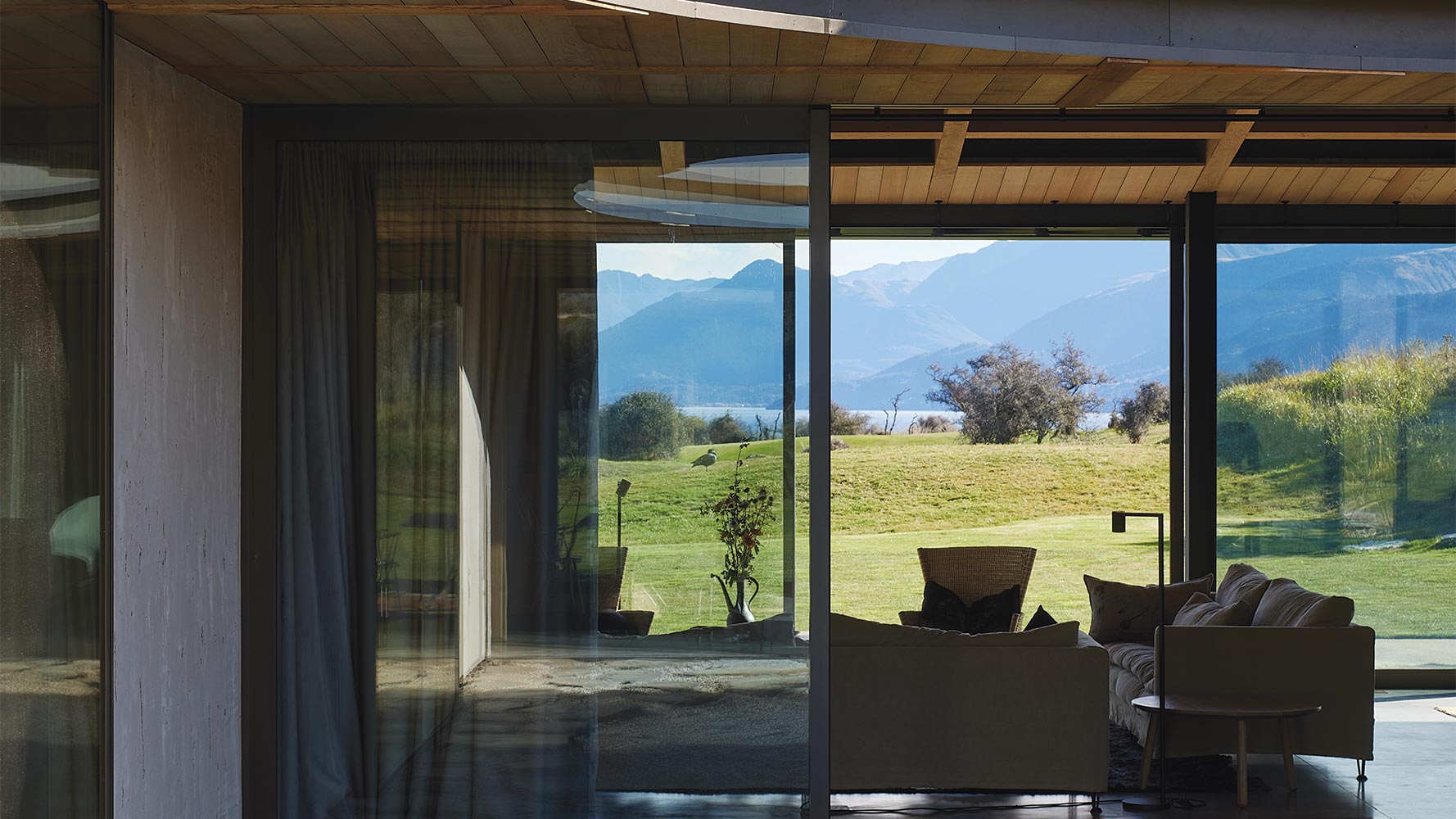
1
Flanked on one end by an open courtyard, the main living space offers sweeping, mountainshrouded views of Lake Wakatipu (1 - 3). Photos © Simon Wilson
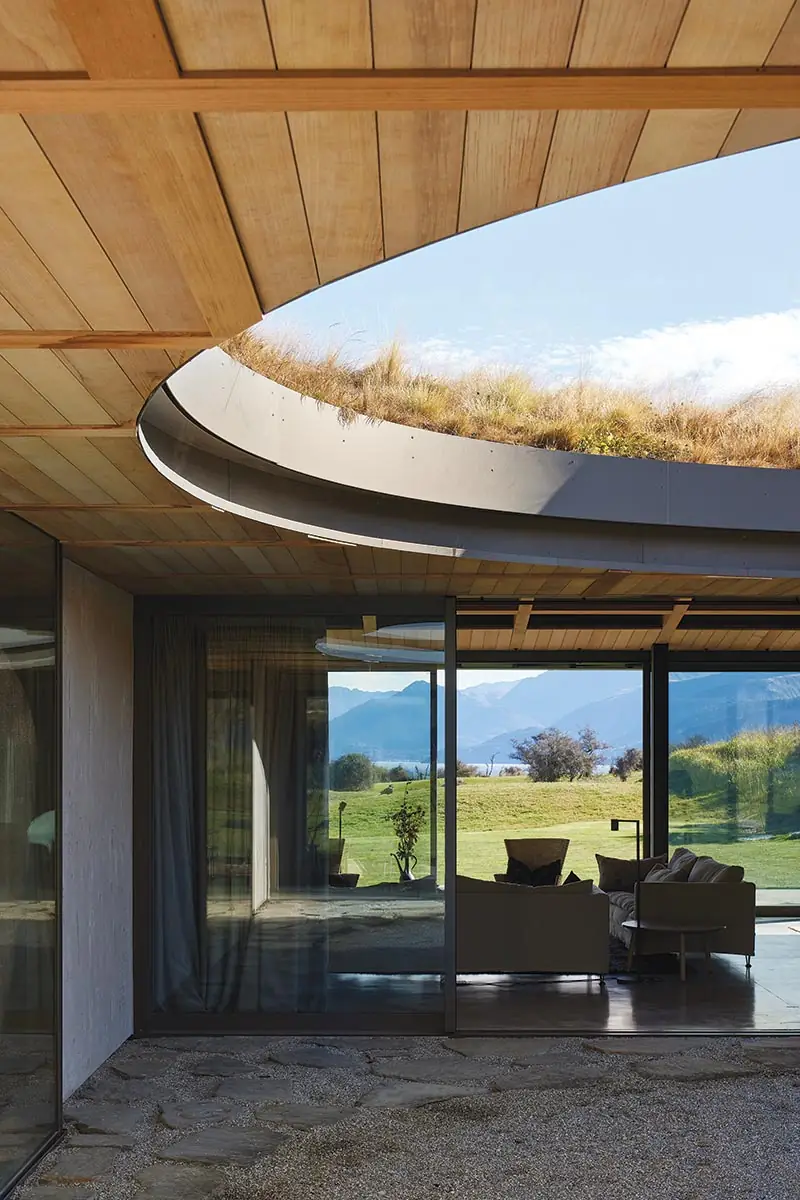
2
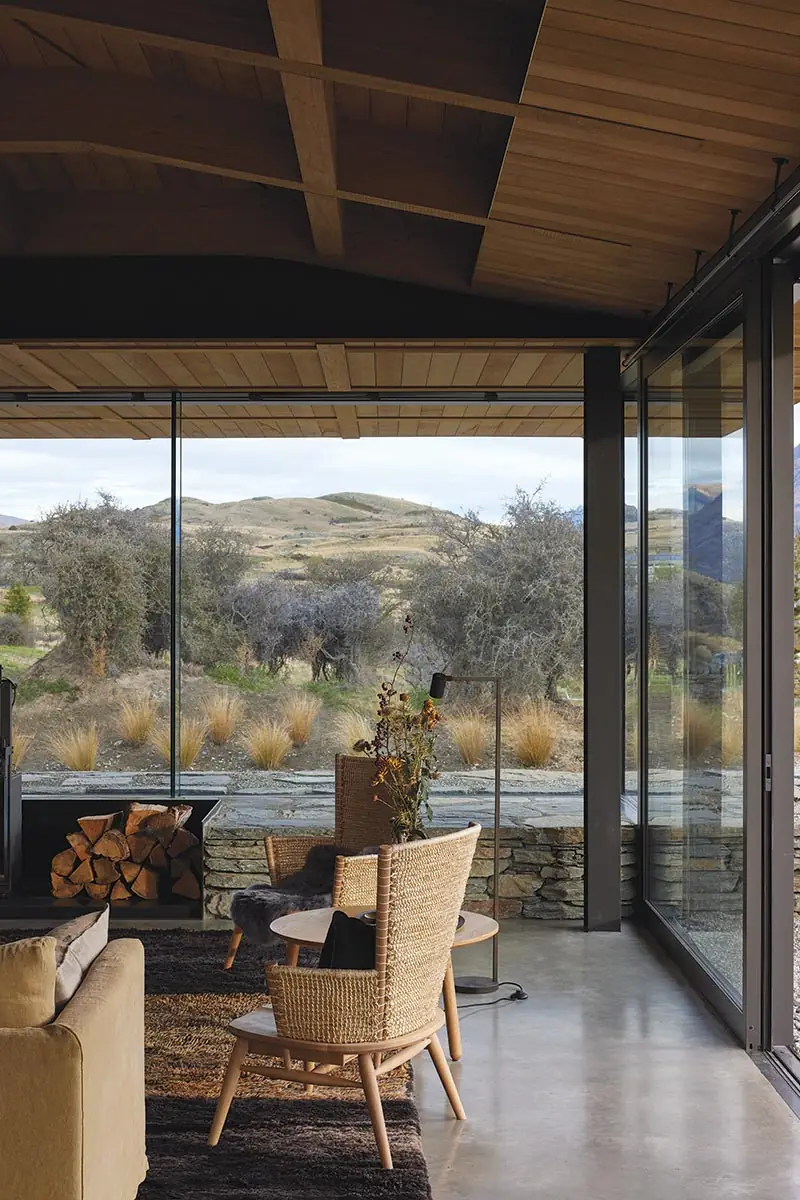
3
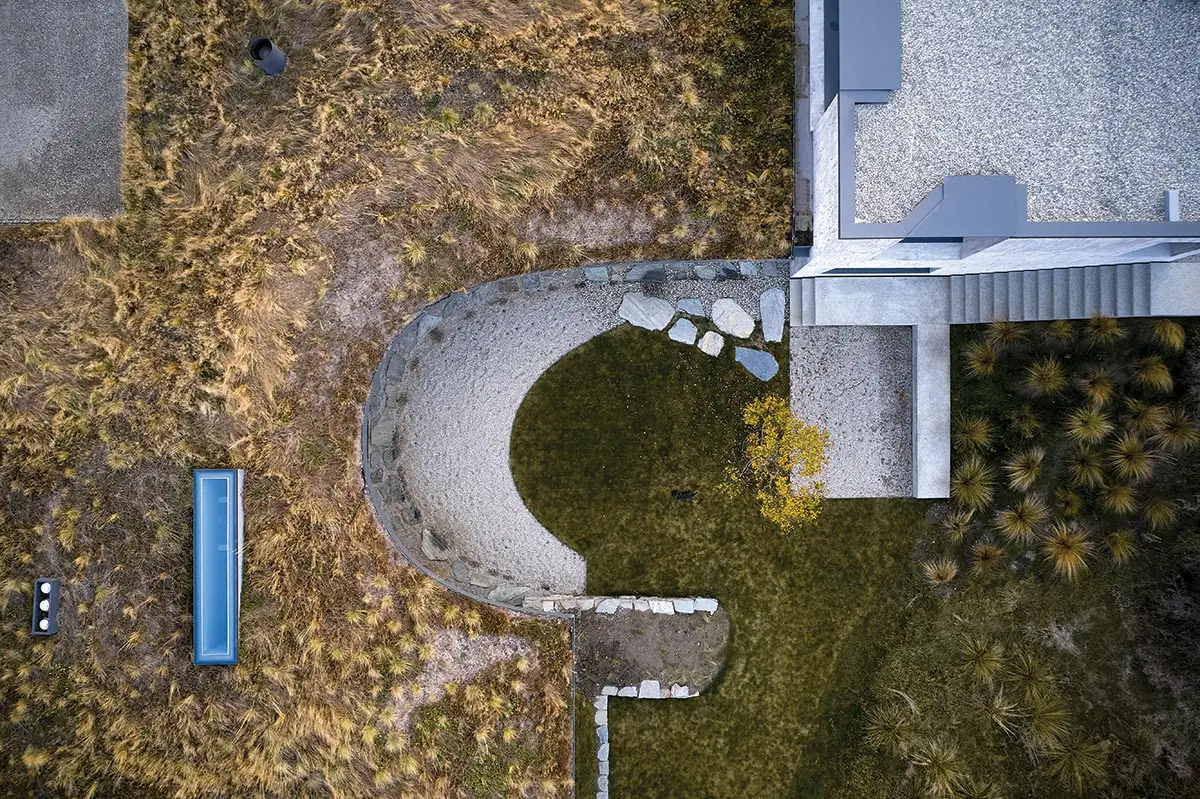
Overhead view of the vegetation-covered roof. Photo © Simon Wilson
Inside, fluid open spaces, with stretches of floor-to-ceiling glass, offer immersive views of the landscape. Even where the roof’s deep eaves extend over the patio, the shading plane curves strategically to keep sight lines unobstructed. Within the living spaces, high ceilings rise to open timbers overhead, revealing the roof’s structure and peaks. Underfoot, floors of polished concrete (with radiant heat) resonate with the earth tones outdoors. The interior design, a collaboration between the architects and owners, draws on the clients’ attraction to the Shaker sensibility, with its almost Modernist simplicity and quiet attention to craft and detail.
Among the house’s many sustainable features are the thermal mass of its embedded structures and the insulation and shading capacity of its roof—all features that passively modulate indoor temperature.
Wild as the property seems, it sits about a 20-minute drive from the gateway town of Queensland, with its commercial airport. Yet the building’s precise and subtle siting obscures even distant glimpses of (and by) neighbors. Further intensifying Matagouri’s sense of seclusion in nature, the facing shores of Lake Wakatipu have no development, lights, or road access. And, even on this side of the water, the house itself almost disappears into the surging waves of hilly land.
Click drawing to enlarge
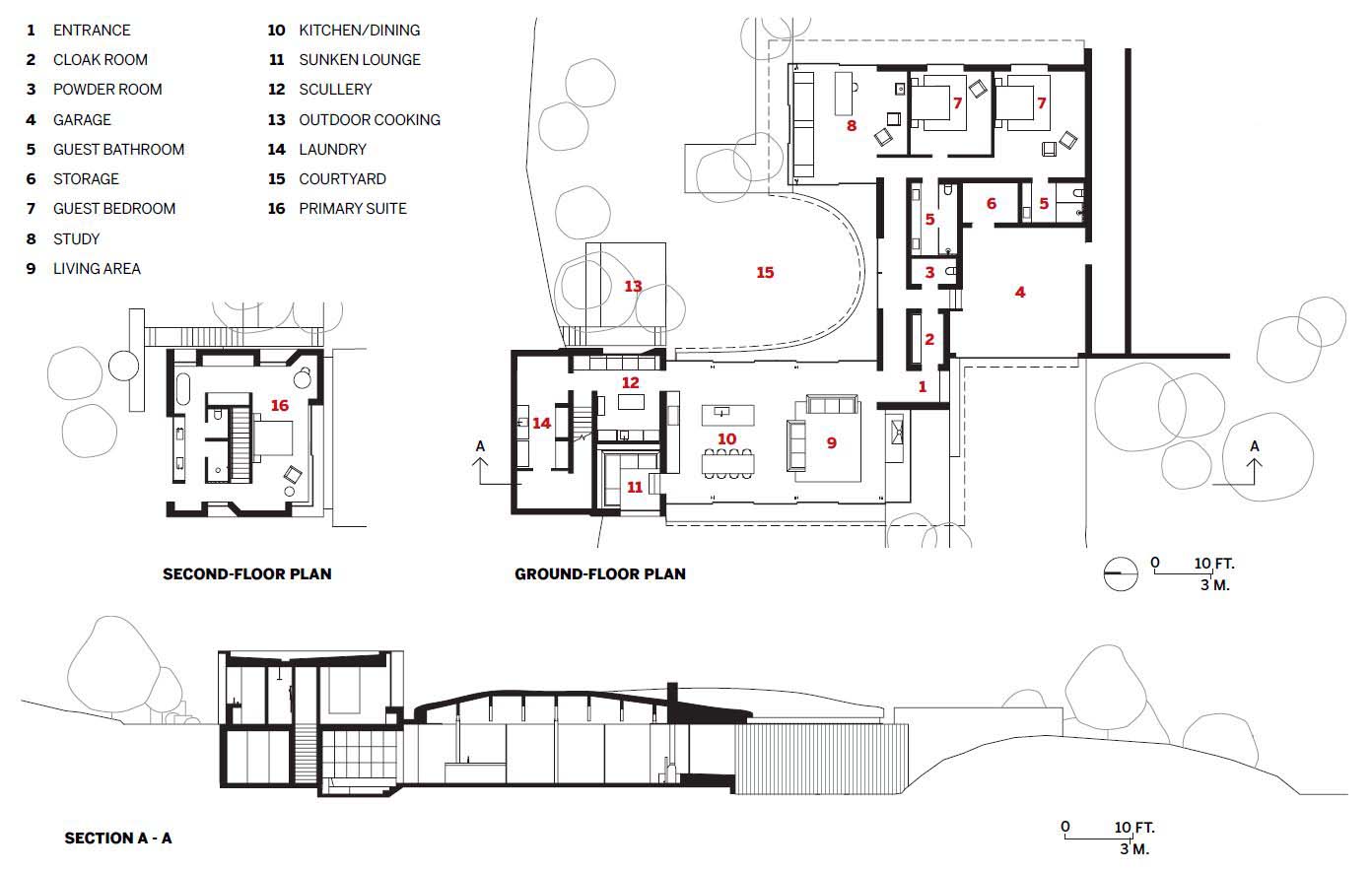
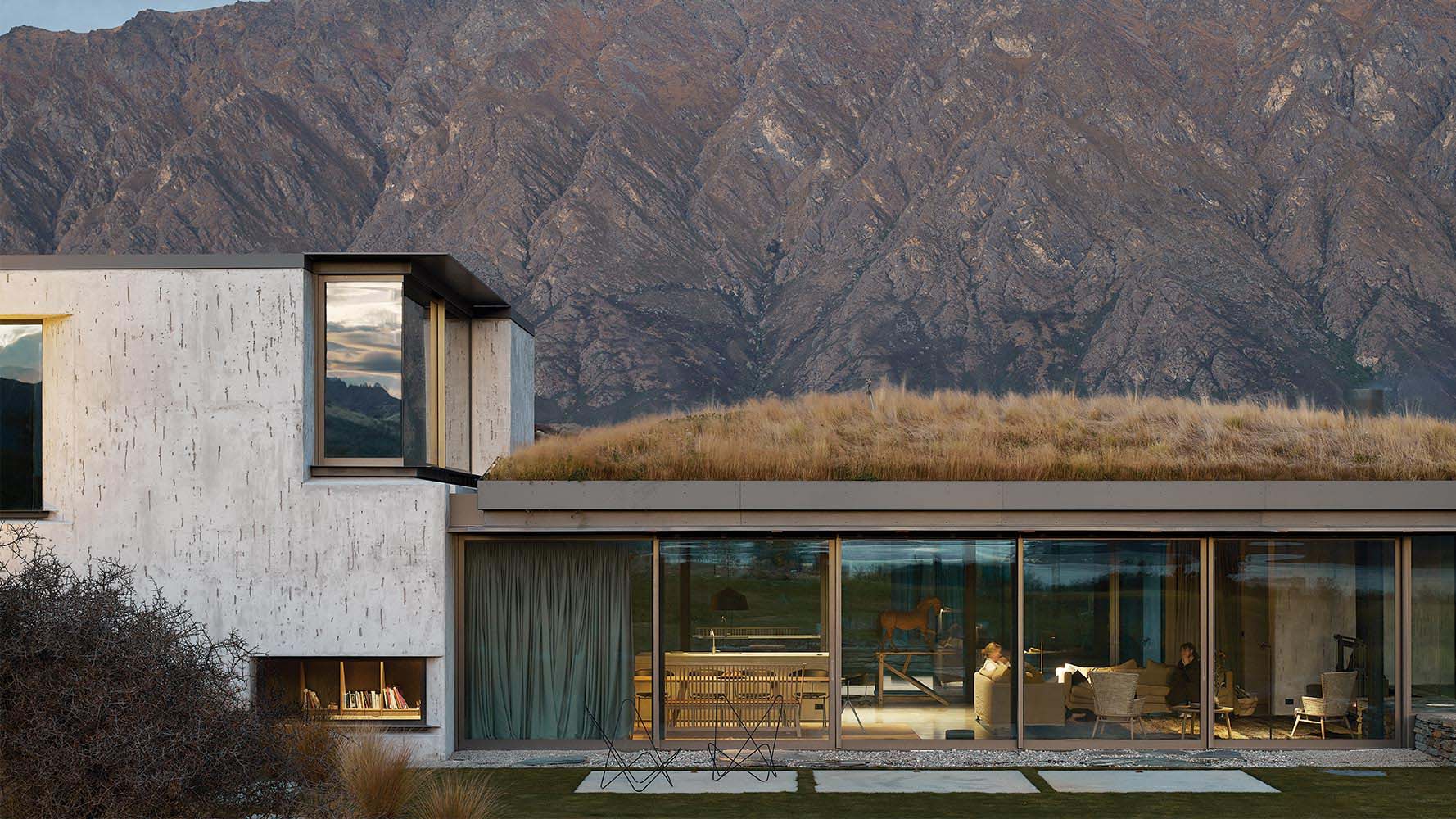


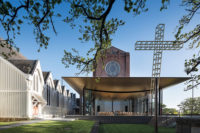
Post a comment to this article
Report Abusive Comment